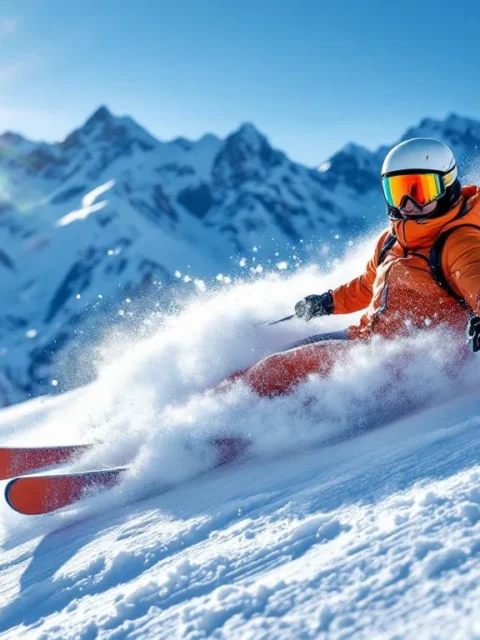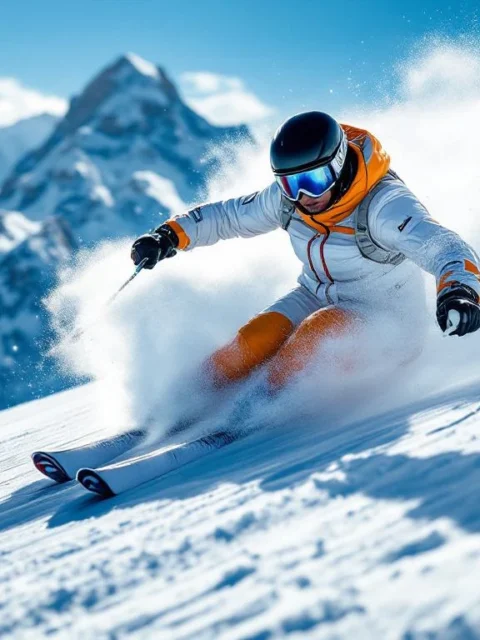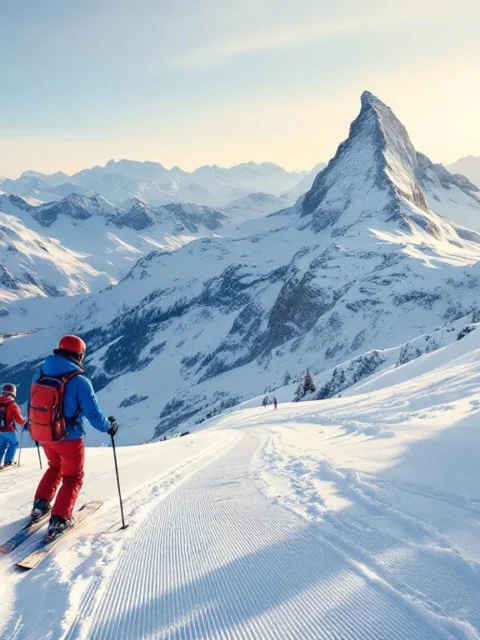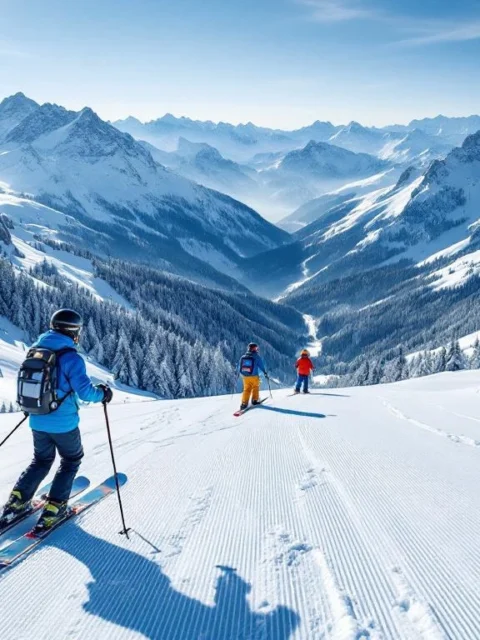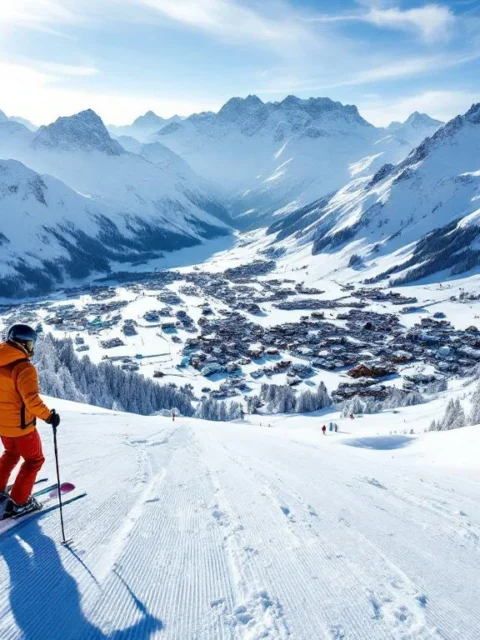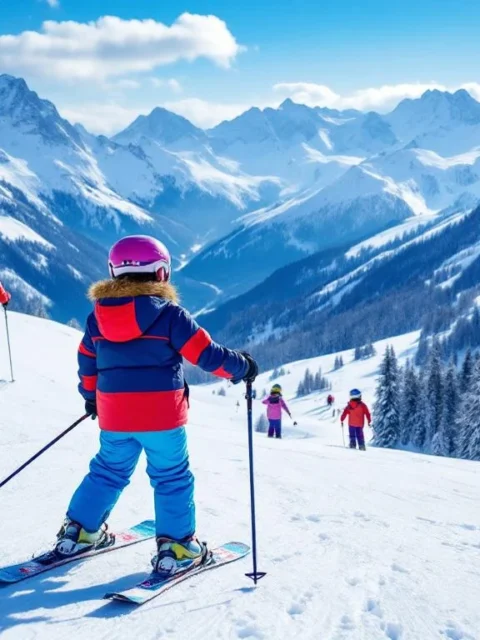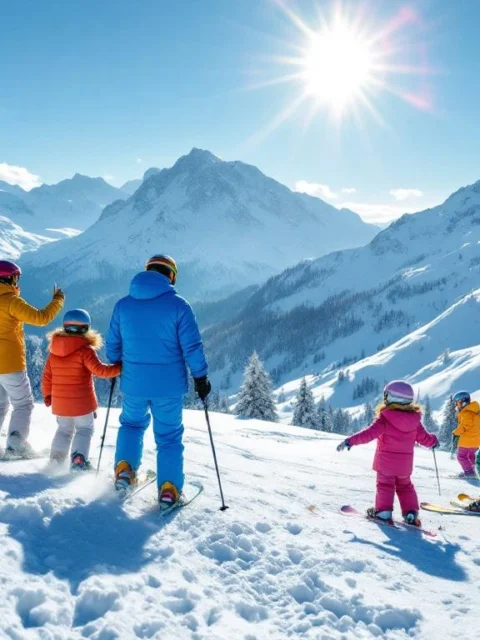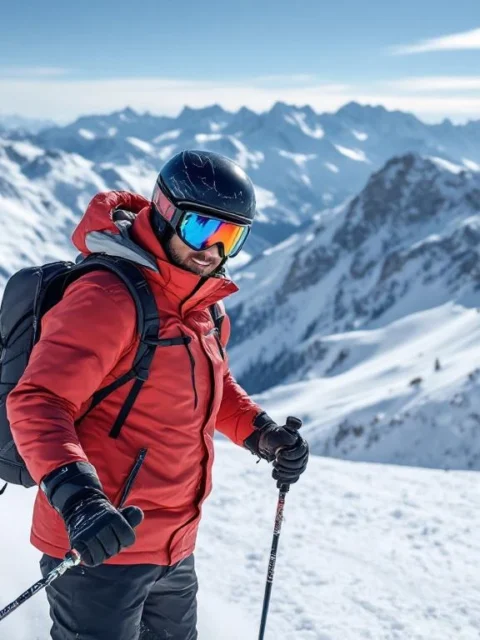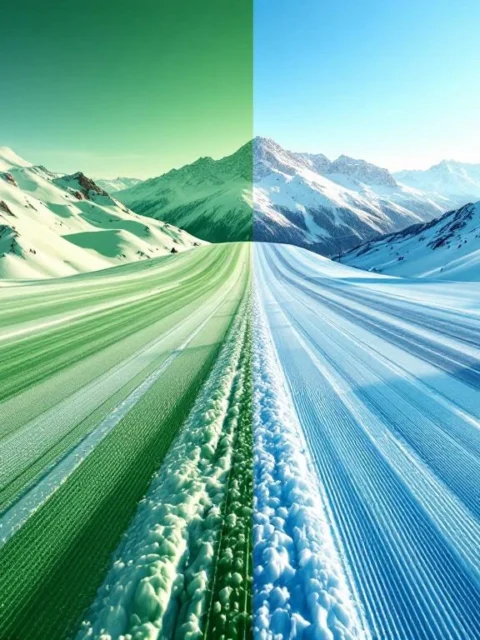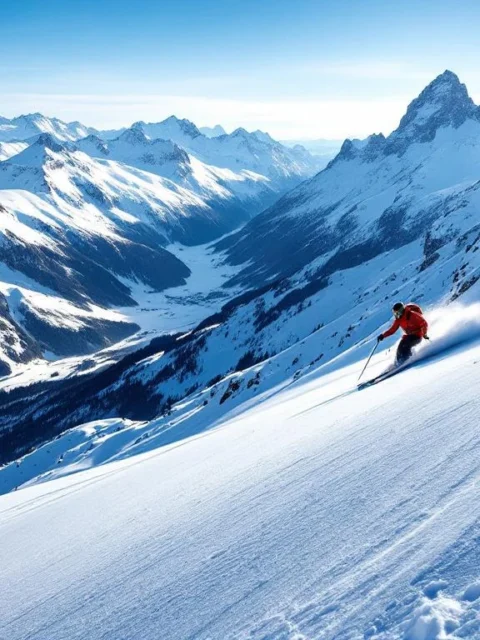Where in Switzerland is there snow all year round?
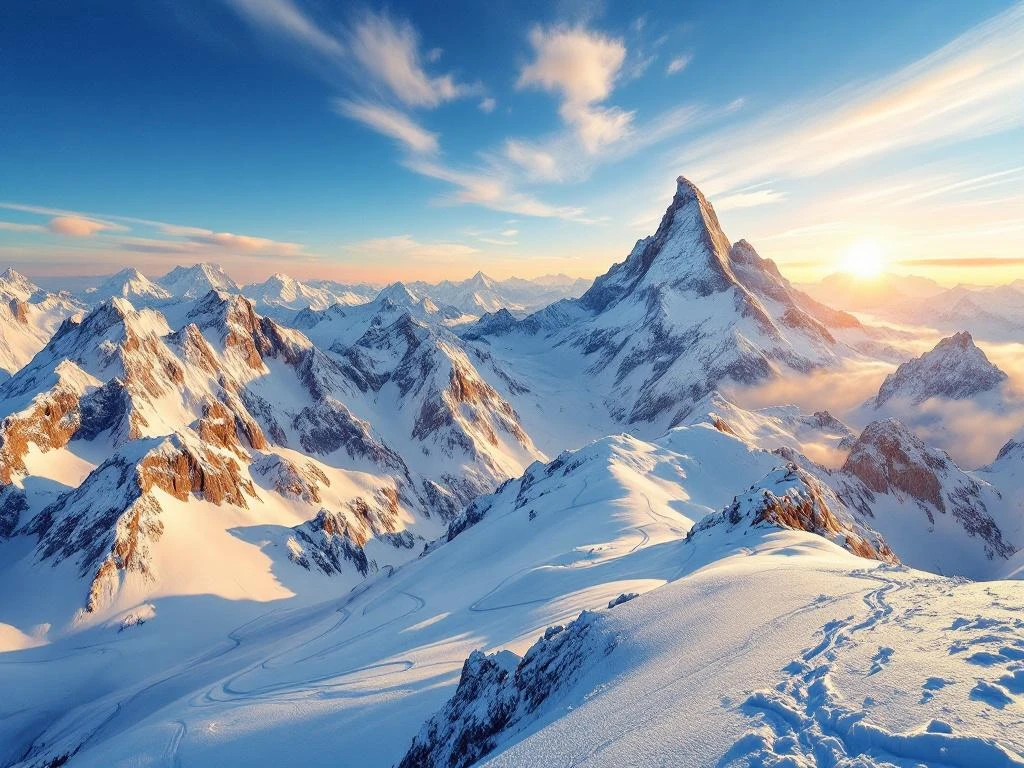
In Switzerland, there is always snow on the glaciers and high-altitude areas above 2,500 meters. The famous glaciers such as Jungfraujoch, Matterhorn Glacier Paradise, and Titlis offer guaranteed snow year-round. Thanks to the unique combination of extreme altitudes and the Alpine climate, you can enjoy perfect snow conditions for skiing and snowboarding here even in summer.
Why is Switzerland a paradise for snow lovers?
Switzerland is the ultimate paradise for snow lovers thanks to its geographical location in the heart of the Alps. The country is strategically positioned between France, Italy, Austria, and Germany, allowing it to benefit from different climate zones that together create optimal snow conditions.
The Swiss Alps extend across more than 60% of the country and reach extreme heights. With peaks rising above 4,000 meters, this creates a natural snow guarantee. The Alpine climate ensures cold temperatures at altitude, even when the weather is mild in the valleys.
The combination of altitude and geographical location makes Switzerland uniquely suited for winter sports. The mountains capture moist air masses from different directions, resulting in regular snowfall. This natural phenomenon, combined with modern snow machines, guarantees optimal slopes throughout the entire season.
Which Swiss glaciers offer snow year-round?
The main glaciers in Switzerland that have permanent snow are Jungfraujoch (3,454m), Matterhorn Glacier Paradise (3,883m), and Titlis (3,238m). These glaciers are accessible year-round for winter sports enthusiasts seeking guaranteed snow.
Jungfraujoch, known as the “Top of Europe,” offers spectacular glacier skiing with breathtaking views. The Aletsch Glacier here is the longest glacier in the Alps and guarantees perfect snow conditions, even during the summer months.
Matterhorn Glacier Paradise near Zermatt is one of the highest ski areas in the world. With its imposing height of nearly 4,000 meters, there is always a thick layer of powder snow here. The Klein Matterhorn glacier offers skiing possibilities 365 days a year.
Titlis near Engelberg is easily accessible via the famous rotating cable car. This glacier offers reliable snow conditions and is perfect for both beginners and advanced skiers who want to enjoy glacier skiing.
At what altitude is there always snow in the Swiss Alps?
In the Swiss Alps, there is permanent snow from approximately 2,500 meters altitude. However, this snow line varies by season and can drop to 1,200 meters in winter, while it can rise to 3,000 meters in summer.
Altitude directly affects snow reliability in different regions. Ski areas above 2,000 meters typically have excellent snow guarantee from December to April. Areas above 2,500 meters can often open as early as November and remain open until May.
Various factors determine the exact snow line: temperature, humidity, wind direction, and solar radiation. North-facing slopes retain snow longer than south-facing slopes due to less sunlight. This natural variation ensures that experienced powder hunters can always find perfect conditions somewhere.
Which Swiss ski areas have guaranteed snow?
Snow-guaranteed ski areas in Switzerland are primarily the high-altitude and glacier ski areas such as Zermatt, Saas-Fee, Engelberg, Verbier, and St. Moritz. These destinations offer reliable snow conditions throughout the entire winter season.
| Ski Area | Altitude (max) | Snow Guarantee Period | Glacier Skiing |
|---|---|---|---|
| Zermatt | 3,883m | November – May | Yes |
| Saas-Fee | 3,600m | December – April | Yes |
| Engelberg | 3,238m | December – May | Yes |
| Verbier | 3,330m | December – April | No |
Zermatt is known for its exceptional snow quality and long season. Matterhorn Glacier Paradise makes it possible to ski even in July and August. Saas-Fee, the “Pearl of the Alps,” offers glacier skiing on the Fee Glacier with guaranteed powder snow.
Engelberg combines glacier skiing on Titlis with extensive slopes at lower altitudes. This diversity ensures optimal opportunities regardless of weather conditions in the valley.
When is the best time to ski with guaranteed snow in Switzerland?
The best period for snow-guaranteed skiing in Switzerland is from January to March, when the snow base is thickest and temperatures remain consistently low. For glacier ski areas, however, you can enjoy excellent conditions year-round.
December and April are also excellent months, although there may be more variation in snow conditions at lower altitudes. In December, ski areas build up their snow base, while April often offers surprisingly good conditions with longer daylight and milder weather.
When planning a snow-guaranteed ski vacation, it’s wise to remain flexible and consider different altitude levels. Glacier ski areas always provide a backup option if lower slopes have less optimal conditions.
We’re happy to help you find the perfect ski school in these snow-rich destinations, so you can make the most of your winter sports vacation, regardless of your level or experience.
What makes Switzerland unique for snow-guaranteed skiing?
Switzerland is unique for snow-guaranteed skiing due to the combination of extreme altitudes, glaciers, modern snow management, and excellent infrastructure. No other country offers so many high-altitude ski areas with permanent snow in such a compact area.
Swiss precision in slope management and snow production ensures that even with less favorable natural conditions, the slopes remain in perfect condition. Investment in modern lift systems and snow machines guarantees optimal ski experiences.
The accessibility of glacier ski areas via modern cable cars and trains makes Switzerland unique. You can travel from green meadows to eternal snow within an hour, which is not so easily possible anywhere else in the world.
For booking ski lessons in these snow-rich destinations, you can choose from more than 250 professional Swiss ski schools for beginners. Whether you’re an absolute beginner wanting to learn your first turns on guaranteed snow, or an experienced skier wanting to enjoy perfect glacier conditions, there’s always an option that suits you. The combination of reliable snow and professional instruction makes every winter sports vacation in Switzerland an unforgettable experience.


